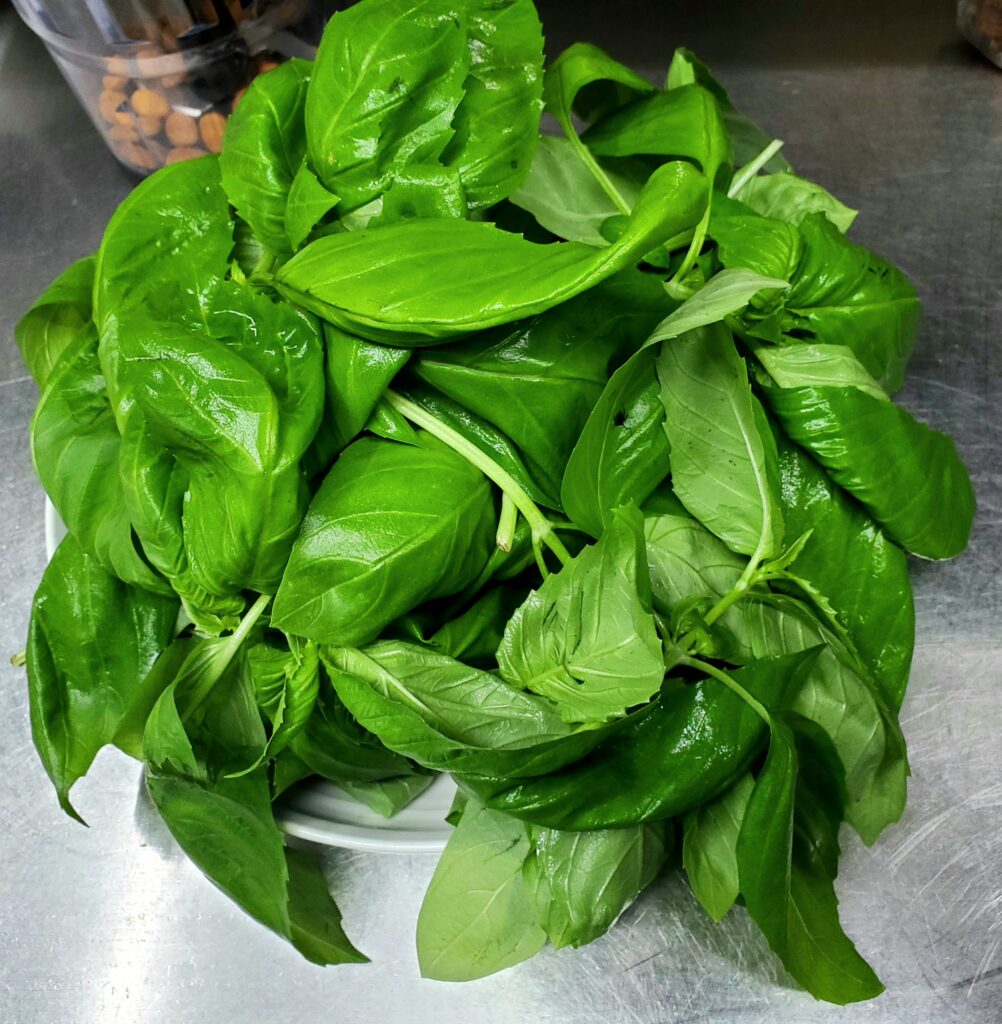Pesto sauce is a classic Italian sauce known for its vibrant flavors and versatility. Originating from Genoa, Italy, this sauce traditionally features fresh basil, garlic, pine nuts, Parmesan cheese, and olive oil. It’s an excellent addition to pasta, sandwiches, salads, and more. Here’s a detailed recipe for making a classic pesto that you can easily prepare at home.
Classic Pesto Sauce: Origin and History
Pesto sauce is a favorite Italian food, and it comes from Genoa, Italy. The word pesto comes from the Italian word pestare which means to crush or to pound (in reference to the original preparation of the sauce in a mortar and pestle).
Origin:
Pesto sauce dates back to roman times when they used a similar mixture of herbs, garlic, and cheese. The modern rendition, “Pesto Genovese,” started to evolve around the 16th century in the Liguria region of Italy, in the city of Genoa. It was originally a paste of basil, garlic, cheese, and olive oil.
History:
Originally, pesto was used as a method of preserving basil and other fresh herbs for the summertime. The ingredients were crushed in a mortar and pestle and made a very flavorful paste that could be kept and used during the year. This way of making it allows for all of the flavors to be combined, and in turn it makes for a very fragrant sauce.

The classic pesto sauce includes:
- Fresh basil leaves: Main herb, it’s aromatic and has a sort of sweet taste to it.
- Pine nuts: These add a subtle nutty flavor and creamy texture.
- Parmesan cheese: Provides a sharp, savory taste. You can buy directly
- Garlic: Adds a pungent and aromatic quality.
- Olive oil: Helps emulsify the sauce and add richness.buy directly
Pesto sauce is still a very universal condiment, good on pasta, on sandwiches, on salads, and as a dip. Its long history and the many ways it has been and is prepared over time shows its importance in italian cooking and food everywhere.
Ingredients:
- 60 gm fresh basil leaves: Packed with flavor and the main ingredient in traditional pesto.
- 75 gm pine nuts: Adds a buttery texture and subtle nutty flavor.
- 50 gm freshly grated Parmesan cheese: Provides a sharp, savory taste.
- 9 gram cloves garlic: Adds aromatic and pungent notes.
- 108 gm extra-virgin olive oil: Helps to emulsify the sauce and adds richness.
- Salt, to taste: Enhances the flavors.
- Black pepper, to taste: Adds a hint of spice.
Instructions:
- Prepare the Ingredients:
- Wash and dry the basil leaves thoroughly.
- Peel the garlic cloves.
- Grate the Parmesan cheese if it’s not pre-grated.
- Toast the Pine Nuts (Optional):
- In a dry skillet over medium heat, toast the pine nuts, stirring frequently until they are golden and fragrant. This step enhances their flavor but can be skipped if you prefer a milder taste.
- Blend the Pesto:
- In a food processor, combine the basil leaves, toasted pine nuts, and garlic. Pulse until finely chopped.
- With the food processor running, slowly add the olive oil in a steady stream. This helps to emulsify the oil with the other ingredients.
- Stop the processor and scrape down the sides as needed to ensure everything is evenly mixed.
- Add the grated Parmesan cheese and pulse again until the mixture is well combined.
- Season the Pesto:
- Taste the pesto and add salt and black pepper to your liking. Pulse a few more times to incorporate the seasonings.
- Store or Serve:
- Use the pesto immediately or transfer it to an airtight container. If storing, drizzle a thin layer of olive oil on top to prevent discoloration. The pesto can be refrigerated for up to a week or frozen for up to 3 months.
Serving Suggestions:
- Pasta: Toss with freshly cooked pasta for a quick and flavorful meal.
- Sandwiches: Spread on bread or use as a condiment for sandwiches and wraps.
- Salads: Drizzle over salads for added flavor.
- Vegetables: Use as a dip for fresh vegetables or as a topping for roasted veggies.
Tips for Perfect Pesto sauce:
- Use Fresh Basil: For the best flavor, use fresh basil leaves. If basil is not available, spinach or arugula can be used as substitutes.
- Cheese Choice: For a more robust flavor, consider using Pecorino Romano instead of Parmesan.
- Nut Variations: Pine nuts are traditional, but you can also use walnuts, almonds, or cashews if you prefer or if pine nuts are not available.
- Oil Quality: Use high-quality extra-virgin olive oil for the best taste and texture.
Pesto Variations:
- Sun-Dried Tomato Pesto: Add sun-dried tomatoes to the classic pesto ingredients for a tangy twist.
- Kale Pesto: Substitute kale for basil for a different flavor profile and added nutrition.
- Cilantro Pesto: Use cilantro instead of basil for a fresh, herbaceous alternative.
This classic pesto sauce recipe is a versatile and delicious addition to your cooking repertoire. With its fresh, herbaceous flavor and creamy texture, it can elevate a wide variety of dishes. Enjoy experimenting with this recipe and finding your favorite ways to use this classic Italian sauce.
